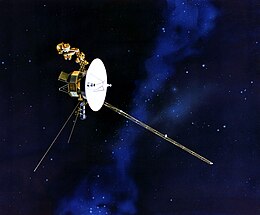I've been having a bit of trouble talking about science lately. It's not because there's any lack of interesting things; it's because there's so much of it that it's hard to settle on one theme.
So I'll just go over the feeds a little bit.
From Phys.org:
Formula 1 Racing Embraces 'Green' Technology: This is interesting on so many levels. The people the determine the rules have downgraded the allowed size of the engine to a 1.6 L V6 engine from a much larger V8. There are also fuel consumption rules intended to result in a competition not only for speed but for efficiency. Recall that many innovations in automobiles are given proof of concept opportunities at these races. But it's also interesting at a technical. The energy/torque ratio for a gasoline motor is non-linear. More energy doesn't always get proportionally torque. DC electric motors are different. As more energy is applied more torque is achieved linearly. This could be the first step towards a much faster Formula 1 racing car. One wonders what will happen when, as has happened in flight, the speed of events exceeds the human operator.
Solar Wind and Space Dust Make Water: Airless space bodies in this solar system are bombarded continuously by both space dust and solar wind. Solar wind consists, in part, as high energy single protons. Think of them as hydrogen atoms with the electrons stripped off. The space dust is often composed of silicates: compounds made of silicon, oxygen and hydrogen along with a few metals. So the raw material of water, hydrogen and oxygen, is present. This study was able to show water forming on a silicate surface that derives from the impact of the high energy protons. Not only does this suggest a long term source of water on the surface of places such as the moon, it also gives one more mechanism for the ubiquitous presence of water molecules in the universe.
Which dovetails nicely with finding water plumes from the dwarf planet Ceres showing Ceres has surface ice and something like an atmosphere. We should know more when the Dawn spacecreaft reaches Ceres next year.
Development of an energy dense sugar fuel cell is extremely encouraging, Not only does sugar have the benefit of using a material that doesn't explode, it's very easy to obtain. In a few years you might be powering your laptops and cell phones with honey. But, not to trivialize this, sugar is what powers your body and pretty much every other living thing in the world. It's very energy dense-- it's been used for solid rocket fuel. It could potentially circumvent the energy storage issue of fuel cells.
From Nobel Intent:
Antarctic Neutrino Detector Comes Of Age: Down under they did something very cool. They put detectors down in the ice. In effect, they are using a 1 kilometer block of ice as the experimental field. Neutrinos come in all sorts of flavors. What they're looking for are high energy neutrinos. Those particles created in massive stellar events like supernovas. Not the mere humdrum weak neutrinos that are generated in the thousands of fusion bomb equivalents every second in the heart of the sun. So far they've found 30. Not many but considering these are barely even blips, that's very cool. Now they're trying to find out where they came from.
Ball Lightning on Video: For the longest time ball lightning was considered a myth. People reported it but nobody had photographed it or figured out what it was made of. Well, that changed this year. A video of ball lightning was captured along with a spectrograph of it. It turns out that the constituents of ball lightning were the same as found in nearby soil. The current hypothesis is that lightning strikes the ground and causes a plasma of these materials that then take some time to dissipate. That was born out by the spectroscopic analysis of the video.
I'm going to depart briefly from reporting on the different feeds to a specific article. This one comes from livescience.com. They were kind enough to report on the many interesting wrinkles in human evolution that were discovered or determined in 2013. The existence of the human hand was pushed back to 1.4 million years ago. Neanderthals probably buried their dead. And, which I've talked about before, humans, Neanderthals and Denisovans interbred quite a bit.
Which brings us to the this article from Science Daily:
Neanderthal sunlight adaptation found in 65% of East Asian population: Forget a piddling 6.5 or 3.2 or whatever percent of the modern human genome came from Neanderthals. The adaptation to UV found in the gene Hyal2 is found in a whopping 65% of those in Japan or China. Further, it looks like this particular gene adaptation was lost when humans came out of Africa and then regained from interbreeding with Neanderthals. People have been saying there is evidence that the Neanderthal genes were strongly selected for. You bet. Not only did we dance with the devil in the pale moonlight, we got something to take home from the experience.
And, finally, one from Io9:
Music derived from Voyager 1 & 2: Voyager 2 managed to escape the solar system. Voyager 1 isn't far behind. Domenico Vicinanza works on managing the network that handles Cern and the LHC. He took 320k measurements from the two spacecraft and used them as input to generate quite a good piece of music. Go read about it and enjoy.
Heck, go enjoy all of this stuff.




No comments:
Post a Comment